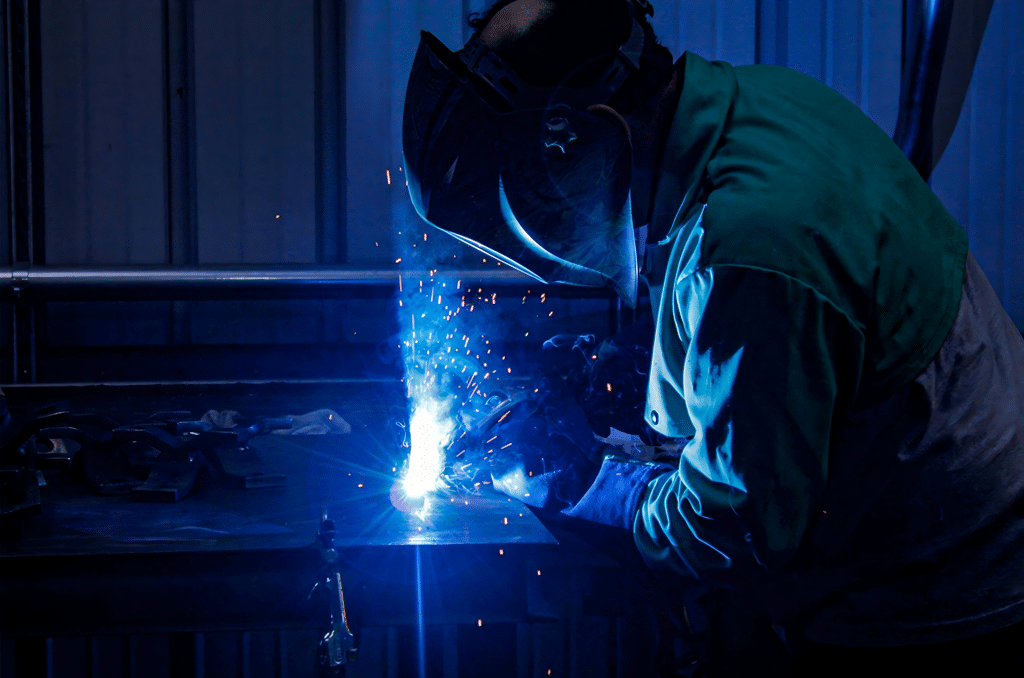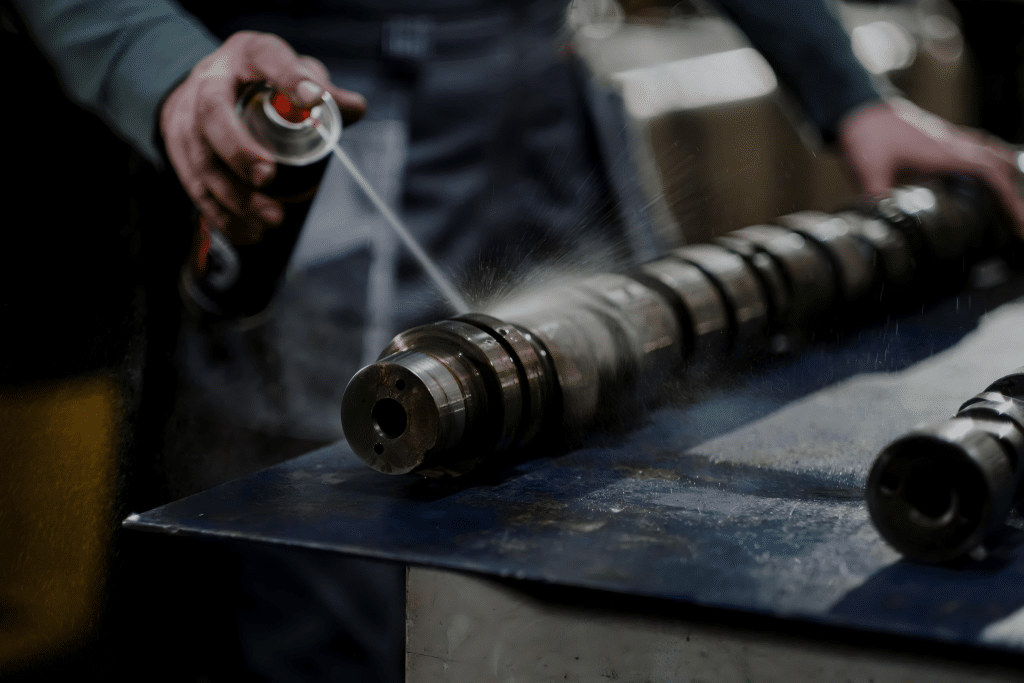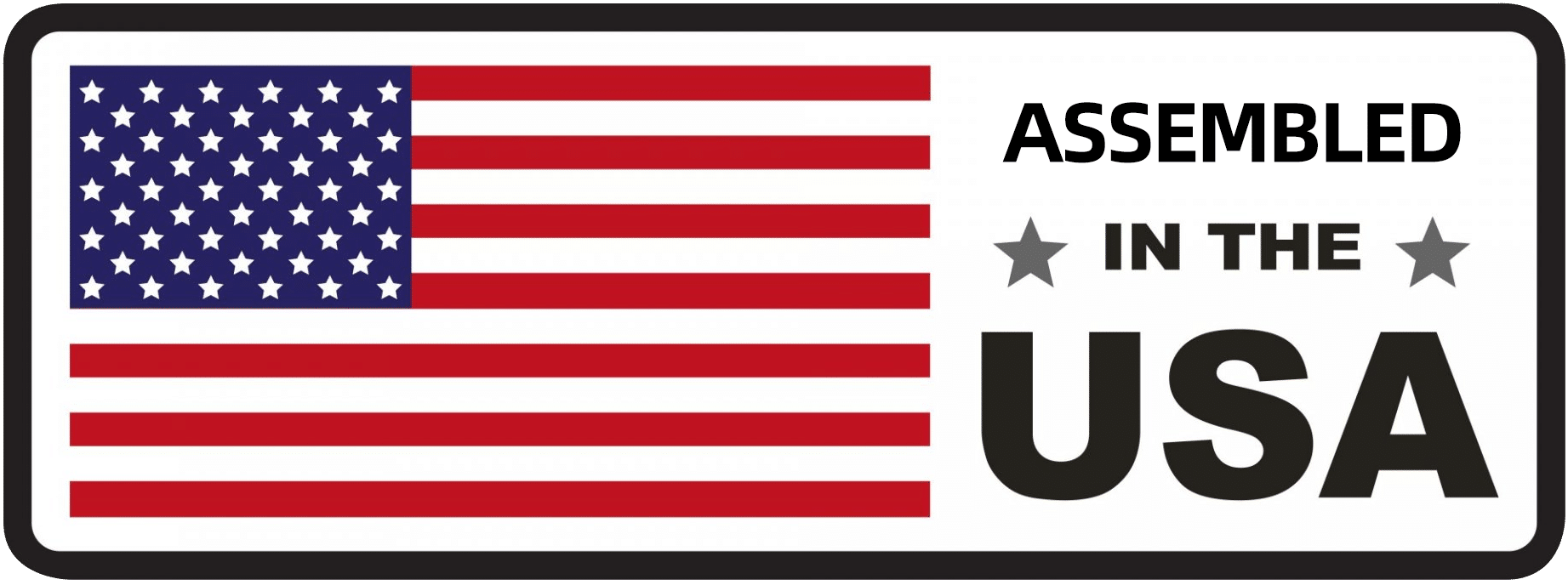
A growing number of industries are learning how to weld carbon steel with laser welding machines, and so understanding their fundamentals will help you in deciding whether these machines are suited for your needs.
Laser welding is a relatively new welding method. By focusing a highly concentrated laser beam onto the material, it can deliver quick, precise, and durable welds with minimal heat distortion. Because you can easily configure the laser parameters, it can work on a wide range of applications as well.
This article provides what you need to know so that you can better understand laser welding, from the properties of carbon steel to the settings that you need to consider before starting your weld.
Understanding the Properties of Carbon Steel Related to Welding
Not all carbon steel is the same. The amount of carbon in a steel alloy has a significant impact on determining its strength, hardness, ductility, and thermal conductivity. To better classify their properties and use cases, carbon steel is divided into three types based on carbon content. When working with carbon steel, choosing the right type for your needs is essential.
Low-carbon steel, also known as mild steel, contains about 0.05% to 0.25% carbon. While it has a lower strength compared to higher carbon steels, its flexibility makes it ideal for applications that require bending or shaping.
Medium carbon steel contains approximately 0.30% to 0.50% carbon. It strikes a balance between strength and ductility. It’s tougher than mild steel but still offers a degree of flexibility.
High carbon steel contains roughly 0.60% to 1.00% carbon. It is the hardest and strongest of the three. However, its increased strength comes at the cost of reduced flexibility.
It’s important to note that even within the same category, carbon steel alloys can still vary in composition. Differences in carbon content and other alloying metals can significantly affect weld quality and performance.
One key metric to assess weldability is the Carbon Equivalent (CE) value. The calculated number accounts for the percentage of carbon and other elements in the alloy and can help predict how the carbon steel will respond to welding.
Any CE below 0.35 typically requires no preheating. A CE between 0.40 and 0.60 may need preheating before welding. Any CE above 0.60 often calls for both preheating and postheating to prevent weld failure.
Preparation for Laser Welding Carbon Steel

Choose the carbon steel type that best suits your project. Low-carbon steel is the most weldable, high-carbon steel offers the greatest strength, and medium-carbon steel balances weldability and mechanical strength.
Surface contaminants will lead to defects and imperfections. If rust or coating is present, remove it completely. Use a wire brush to grind the surface to remove any oxide layers, and use solvent degreasing to clean the surface to eliminate grease and oil.
Joint design can influence overall weld strength and efficiency. Butt joints require accurate alignment for full penetration. Lap joints work well for sheet metals since they don’t require additional support. For applications that need high tensile strength, fillet joints can be ideal.
Both medium-carbon and high-carbon steels need preheating to minimize cracking and brittleness. Their preheat temperatures will vary based on the thickness and type of the steel, since welding carbon steel at room temperature will cause rapid cooling.
Choosing the Right Laser Welding Equipment for Carbon Steel
Laser welding may seem versatile, but different laser welding machines are designed for different materials, thicknesses, and precision levels. Here are a few considerations when choosing the right laser welding equipment for you.
Fiber laser welding provides focused and deeper penetration, making it effective for carbon steel compared to other laser types. CO2 laser welding works well for thick sections, while diode lasers offer a cost-effective solution, but carbon steel’s lower energy absorption can reduce their overall effectiveness.
Welding machines can vary in laser power, typically ranging from 500W to 10kW, which can accommodate different material thicknesses. They can also vary in their beam quality, which can affect overall focus and penetration. These machines may feature pulsed or continuous wave modes. Pulsed mode can minimize heat input, while continuous wave enables deeper penetration.
It is important to check the shielding gas and cooling systems of the welding machines. Shielding gas prevents oxidation during welding and will stabilize the weld pool, while cooling systems protect the machine from overheating.
Best Practices and How to Weld Carbon Steel Efficiently
To master how to weld carbon steel using laser welding, it’s crucial to understand a few important welding parameters.
Laser power affects penetration depth and weld width. If the power is high, the weld will be deeper, and if the power is low, the result is a shallower weld.
Pulse duration changes the size of the heat-affected zone (HAZ). Longer pulses create a bigger HAZ, while shorter pulses keep the heat in a small area.
Beam focus influences the energy concentration. A narrow beam puts more energy into a tiny spot, creating deeper welds. However, wider beams will spread the energy out over a larger area.
To prevent the weld from oxidation and contamination, be sure to use the appropriate shielding gas and flow rate, because using the wrong shielding gas and flow rate can introduce turbulence to the weld and result in discoloration and porosity.
While welding, you can minimize the HAZ by using short pulse durations and a lower laser power whenever possible, which can help reduce the risk of distorting the material. You can also use real-time sensors or cameras to monitor temperature, melt pool size, and beam patterns to detect defects like porosity and cracking early on in the process.
Different carbon steel grades need to be prepared properly. After cleaning the surface, preheating the medium and high carbon steel can reduce cracks and distortion. Adjust the preheat temperature based on the thickness of the material.
Fiber Laser Welding Modes Suitable for Carbon Steel
Conduction mode welding is where heat spreads via conduction, creating shallow and wide welds. Keyhole mode penetrates the material deeper to enable strong and narrow welds.
Pulsed-wave welding is where it alternates between high and low intensity, allowing for a more controlled heat input. Continuous-wave mode is where it emits a constant laser beam, suitable for deep penetration welds or for sensitive materials like high carbon steels.
It’s also possible to combine laser welding with arc welding in the same operation. After the laser melts the material’s surface, an arc deepens the weld to ensure a deeper bond between the materials. This hybrid laser welding can be well-suited whenever deep and precise welds are required.
Applications of Laser Welding on Carbon Steel
A wide range of industries has adopted laser welding. Here are some examples across different industries.
The automotive industry needs strong and precise welds for its engine parts and for welding dissimilar materials. Thankfully, the controlled heat of laser welding allows for strong and highly controlled welds with reduced risk of deformations.
The versatility of laser welding can cover a wide range of construction work, from larger-scale tasks such as joining structural components to smaller tasks such as frames and custom metal pieces.
By using laser welding, manufacturers can precisely solder circuit boards, battery connectors, and other electronic components in heavy machinery. Because of its minimal heat transfer, any delicate components are safe from damage during the welding process.
In fact, laser welding’s precision can help build diagnostic tools and surgical equipment that can meet the strict tolerances needed in the medical industry.
Advantages of Using Laser Welding Over Traditional Methods for Carbon Steel
Compared to traditional methods like MIG and TIG welding, laser welding offers a more controlled and more tightly focused heat input. This concentrated energy minimizes the HAZ by melting only a small surface area of the metal, reducing thermal distortion and the need for post-weld treatments.
Thanks to its precision, laser welding can be ideal for joining complex geometries and, together with techniques like laser wobbling, can securely weld together dissimilar metals.
Altogether, they allow for a greater level of precision and repeatability, and these advantages can further translate into faster processing speeds, consistent quality, quicker turnaround, and overall lessened operational costs.
Safety Considerations When Laser Welding Carbon Steel
Laser welding presents a specific set of hazards, so always check if workers are following proper safety measures to maintain a secure and efficient operation.
Always wear laser safety goggles and heat-resistant gloves to protect the eyes and hands from high-intensity radiation. Avoid any direct eye exposure, as direct exposure to laser radiation can cause severe eye and skin damage, and the intense heat can cause severe burns.
Respiratory protection is also essential to prevent the inhalation of toxic metal fumes and vapors. To minimize any lingering emissions, the area should also be properly ventilated.
Conclusion
Fiber laser welding machines provide a great solution on how to weld carbon steel. Its precision, efficiency, and adaptability make it well-suited for creating precise and strong welds across many applications and industries.
Investing in the right machines for your needs can transform your workflows. To optimize productivity and efficiency, be sure to thoroughly assess the type of equipment that you need before equipment selection.
And if you’re looking for the latest fiber laser welding machines available on the market, Denaliweld might have something for you. You can talk to an expert today, and they can help assess your needs and provide a no-obligation quote within 24 hours.



